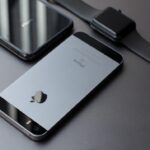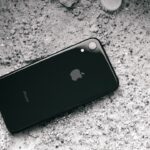Find My iPhone is a powerful feature integrated into Apple’s ecosystem, designed to help users locate their lost or stolen devices. Launched in 2010 as part of the iCloud service, this tool has evolved significantly over the years, incorporating advanced technologies such as GPS tracking, Bluetooth, and even augmented reality. The primary function of Find My iPhone is to provide users with the ability to track their devices in real-time, ensuring that they can recover their belongings quickly and efficiently.
This feature is not only limited to iPhones; it extends to other Apple devices, including iPads, Macs, Apple Watches, and AirPods, creating a comprehensive safety net for users within the Apple ecosystem. The importance of Find My iPhone cannot be overstated, especially in a world where smartphones have become essential tools for communication, work, and personal organization. Losing a device can lead to significant disruptions, not only in terms of financial loss but also concerning the potential exposure of sensitive personal information.
With Find My iPhone, users can remotely lock their devices, display a message on the screen, or even erase all data if recovery seems impossible. This multifaceted approach to device security underscores Apple’s commitment to user safety and privacy, making Find My iPhone an indispensable feature for anyone who owns an Apple device.
Key Takeaways
- Find My iPhone is a valuable tool for locating lost or stolen Apple devices
- To enable Find My iPhone, go to Settings, tap on your name, select iCloud, and then turn on Find My iPhone
- You can pause Find My iPhone by entering your Apple ID password and selecting the device you want to pause
- Reasons to pause Find My iPhone include needing to repair or sell your device
- To resume Find My iPhone, simply enter your Apple ID password and select the device you want to resume
- Common issues with Find My iPhone include inaccurate location tracking and device not showing up on the map
- Tips for using Find My iPhone effectively include keeping your device updated and using the Lost Mode feature
- Find My iPhone is an essential tool for protecting your Apple devices and ensuring their security
How to Enable Find My iPhone
Enabling Find My iPhone is a straightforward process that can be completed in just a few steps. First, users need to ensure that they are signed into their Apple ID on their device. This can be done by navigating to the Settings app and tapping on the user’s name at the top of the screen.
Once signed in, users should scroll down to find the “Find My” option. Tapping on this will lead them to a new menu where they can activate the feature by toggling the “Find My iPhone” switch to the ON position. It is also advisable to enable the “Send Last Location” option, which automatically sends the device’s last known location to Apple when the battery is critically low.
After enabling Find My iPhone, users can access this feature through the Find My app or via iCloud.com. The app provides a user-friendly interface that displays a map with the location of all registered devices. For those who may not be familiar with the process, Apple provides detailed instructions on its support website, ensuring that even less tech-savvy users can successfully enable this critical feature.
Additionally, it is important for users to keep their devices updated with the latest software versions, as updates often include enhancements and security improvements related to Find My iPhone.
How to Pause Find My iPhone

Pausing Find My iPhone can be necessary for various reasons, such as when selling or giving away a device. To pause this feature, users must first navigate to the Settings app on their device. After tapping on their name at the top of the screen and selecting “Find My,” they will see an option labeled “Find My iPhone.” Tapping on this will reveal a toggle switch that can be turned off.
However, it is essential to note that pausing this feature requires entering the Apple ID password for security purposes. This step ensures that only authorized users can disable tracking capabilities. Once Find My iPhone is paused, users should be aware that they will no longer be able to track their device’s location or utilize other features associated with Find My iPhone until it is re-enabled.
This temporary suspension can be particularly useful when preparing a device for transfer to another user or when troubleshooting issues that may arise from location tracking. However, it is crucial for users to consider the implications of pausing this feature, as it removes an essential layer of security from their device.
Reasons to Pause Find My iPhone
| Reasons to Pause Find My iPhone |
|---|
| 1. Preserving battery life |
| 2. Reducing data usage |
| 3. Preventing location tracking |
| 4. Avoiding unnecessary notifications |
There are several valid reasons why someone might choose to pause Find My iPhone temporarily. One of the most common scenarios involves selling or giving away an Apple device. When transferring ownership, it is essential to disable Find My iPhone to ensure that the new owner can set up the device without encountering any restrictions tied to the previous owner’s Apple ID.
Failing to do so could lead to complications during setup and may prevent the new user from accessing certain features or services. Another reason for pausing Find My iPhone could be related to privacy concerns. In situations where users are sharing their location with friends or family members through the Find My app, they may wish to pause this feature temporarily for personal reasons.
For instance, if someone wants to maintain privacy during a specific outing or event, they might choose to pause location sharing until they feel comfortable resuming it. This flexibility allows users to manage their privacy settings according to their preferences while still benefiting from the security features offered by Find My iPhone.
How to Resume Find My iPhone
Resuming Find My iPhone after it has been paused is a simple process that mirrors the steps taken to enable it initially. Users should begin by opening the Settings app on their device and tapping on their name at the top of the screen. From there, they will navigate back to the “Find My” section and select “Find My iPhone.” Here, they will find the toggle switch that was previously turned off; by switching it back ON, users can reactivate the feature.
It is important to note that re-enabling Find My iPhone may also require entering the Apple ID password for verification purposes. Once Find My iPhone is resumed, users can once again take advantage of its full range of features, including locating their device on a map and utilizing remote actions such as locking or erasing data if necessary. It is advisable for users to check that all settings are configured correctly after resuming this feature, including ensuring that “Send Last Location” is enabled.
This proactive approach helps maintain optimal security and ensures that users are prepared in case their device goes missing again.
Troubleshooting Common Issues with Find My iPhone

Despite its robust functionality, users may occasionally encounter issues with Find My iPhone that can hinder its effectiveness. One common problem is when a device appears offline or cannot be located on the map. This situation can arise due to several factors, including poor network connectivity or if the device’s battery has died.
To troubleshoot this issue, users should first ensure that their device has an active internet connection and that location services are enabled. If these conditions are met and the device still cannot be located, it may be necessary to check if Find My iPhone is enabled on the device itself. Another frequent issue involves difficulties in accessing Find My iPhone through iCloud.com or the Find My app.
Users may find themselves unable to log in due to incorrect Apple ID credentials or two-factor authentication challenges. In such cases, verifying that they are using the correct Apple ID and password is crucial. If two-factor authentication is enabled, users should ensure they have access to their trusted devices or phone numbers for verification codes.
Additionally, keeping software updated on both the tracking device and any devices used for accessing Find My iPhone can help mitigate compatibility issues.
Tips for Using Find My iPhone Effectively
To maximize the benefits of Find My iPhone, users should consider implementing several best practices. First and foremost, regularly checking that Find My iPhone is enabled on all devices is essential for maintaining security. Users should also familiarize themselves with the features available within the Find My app, such as setting up notifications for when a device is found or marking it as lost if it goes missing.
These proactive measures can significantly enhance recovery chances in case of loss or theft. Another effective strategy involves utilizing additional features offered by Apple’s ecosystem in conjunction with Find My iPhone. For instance, enabling Family Sharing allows family members to share their locations with one another through the Find My app.
This feature not only enhances safety but also fosters communication among family members regarding whereabouts during outings or travel. Furthermore, users should consider regularly updating their Apple ID password and enabling two-factor authentication for added security against unauthorized access.
The Importance of Find My iPhone
The significance of Find My iPhone extends beyond mere convenience; it embodies a commitment to user security and peace of mind in an increasingly digital world. As smartphones become integral parts of daily life—housing personal information, financial data, and communication tools—the ability to track and secure these devices becomes paramount. The features offered by Find My iPhone not only facilitate recovery but also empower users with control over their devices’ security settings.
In an era where technology plays a pivotal role in our lives, understanding how to effectively utilize tools like Find My iPhone is essential for safeguarding personal assets and information. By enabling this feature and familiarizing themselves with its functionalities, users can navigate potential challenges with confidence and ensure that they are well-prepared in case of loss or theft. Ultimately, Find My iPhone serves as a vital resource for anyone invested in maintaining their digital security within Apple’s ecosystem.
If you are looking for more information on how to manage your iPhone settings, you may want to check out the article on iPhone settings and features. This article provides detailed information on how to customize your device to suit your needs and preferences. It covers topics such as managing notifications, adjusting display settings, and optimizing battery life. By following the tips and tricks outlined in this article, you can make the most out of your iPhone experience.
FAQs
What is Find My iPhone?
Find My iPhone is a feature developed by Apple that allows users to locate their lost or stolen iPhone, iPad, Mac, or Apple Watch using another Apple device or through iCloud.com.
How do I pause Find My iPhone?
To pause Find My iPhone, you can turn off the feature by going to Settings > [your name] > Find My > Find My iPhone and toggling off the switch. You will need to enter your Apple ID password to confirm.
Why would I want to pause Find My iPhone?
You may want to pause Find My iPhone if you are selling or giving away your device, or if you are having it serviced and need to temporarily disable the feature.
Can I pause Find My iPhone remotely?
Yes, you can pause Find My iPhone remotely by using the Find My app on another Apple device or by signing in to iCloud.com and removing the device from your account.
What are the implications of pausing Find My iPhone?
Pausing Find My iPhone means that you will no longer be able to track the location of your device, play a sound on it, or remotely erase its data. It also means that Activation Lock will be disabled, allowing someone else to set up and use the device with their own Apple ID.










